Stem Cell Therapy Pain Relief Estimator
Understand Your Potential Outcomes
Based on current clinical trial data, estimate potential pain relief and duration. This tool helps you understand what to expect from stem cell therapy for trigeminal neuralgia.
Quick Takeaways
- Trigeminal neuralgia (TN) causes sudden, intense facial pain that is hard to control with standard drugs.
- Stem cell therapy aims to repair damaged nerve fibers and modulate pain signals.
- Mesenchymal stem cells (MSCs) and induced pluripotent stem cells (iPSCs) are the front‑runners in current research.
- Early‑phase clinical trials show pain reduction in 40‑70% of participants, but long‑term safety data are still limited.
- Patients should weigh the potential benefits against regulatory status, cost, and possible side effects before seeking treatment.
Understanding Trigeminal Neuralgia
Trigeminal neuralgia, often called the "suicide disease," is a chronic disorder of the fifth cranial nerve (cranial nerve V). It produces brief, electric‑shock‑like pains that can be triggered by everyday activities such as brushing teeth or even a gentle breeze.
Typical triggers include:
- Touching the face (e.g., shaving, applying makeup)
- Speaking or chewing
- Cold air exposure
Conventional treatment pathways start with anticonvulsants like carbamazepine, move to surgical decompression, or consider radiofrequency ablation when medication fails. Yet up to 30% of patients experience inadequate relief or intolerable side effects, prompting the search for alternatives.
Trigeminal neuralgia is a neuropathic facial pain condition caused by irritation or demyelination of the trigeminal nerve, leading to abnormal firing of pain signals.
What Is Stem Cell Therapy?
Stem cell therapy involves introducing living cells that can differentiate into specialized tissue, secrete growth factors, or modulate immune responses. The idea is to replace lost or damaged cells and create a healthier micro‑environment.
There are three main cell classes used in neuro‑regenerative research:
- Mesenchymal stem cells (MSCs) - harvested from bone marrow, fat, or umbilical cord.
- Induced pluripotent stem cells (iPSCs) - adult cells re‑programmed back to a pluripotent state.
- Embryonic stem cells (ESCs) - naturally pluripotent but ethically contentious.
Each class brings a unique mix of safety profile, differentiation potential, and manufacturing complexity.
Stem cell therapy is a medical approach that delivers living cells capable of repairing or replacing damaged tissues, often by releasing bioactive molecules that influence surrounding cells.
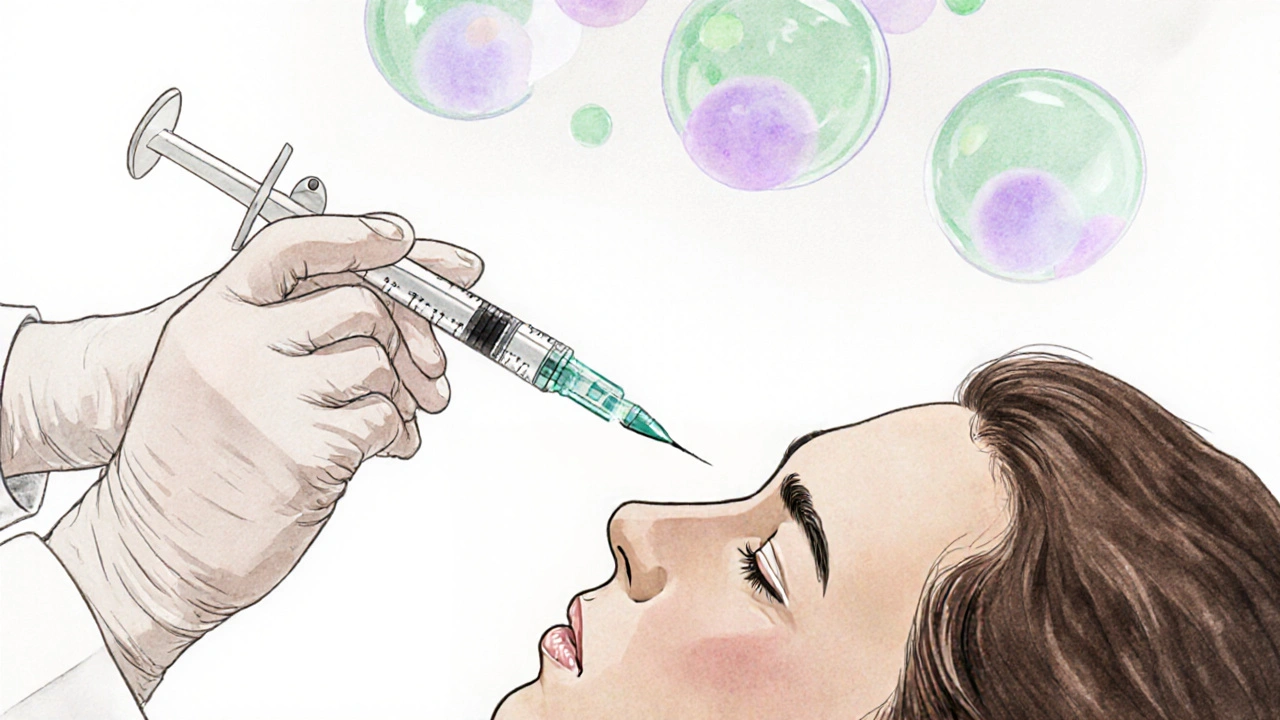
How Stem Cells Could Target Trigeminal Neuralgia
The pain in TN largely stems from focal demyelination of the trigeminal root, often caused by vascular compression. When the myelin sheath thins, the nerve misfires, sending pain spikes to the brain.
Stem cells could intervene in three ways:
- Remyelination: MSCs secrete neurotrophic factors such as brain‑derived neurotrophic factor (BDNF) and glial‑derived neurotrophic factor (GDN‑F) that promote oligodendrocyte activity, potentially restoring the myelin layer.
- Modulation of inflammation: Chronic low‑grade inflammation around the nerve contributes to ongoing damage. Both MSCs and iPSCs release anti‑inflammatory cytokines (e.g., IL‑10) that calm the local immune response.
- Neuronal regeneration: iPSCs can be coaxed into sensory neuron precursors that might replace injured trigeminal fibers, re‑establishing normal signal conduction.
Animal models of facial nerve injury have shown up to 60% reduction in pain‑behaviour scores after MSC infusion, suggesting a plausible translational pathway.
Mesenchymal stem cells are multipotent adult stem cells derived from bone marrow, adipose tissue, or umbilical cord, known for their immunomodulatory and paracrine effects.
Induced pluripotent stem cells are reprogrammed adult cells that regain the ability to differentiate into any cell type, offering a patient‑specific source of neural precursors.
Current Research & Clinical Trials
In the last five years, 12 registered clinical trials have examined stem cell interventions for facial neural pain. Most are Phase I/II, focusing on safety and preliminary efficacy.
| Cell Type | Source | Delivery Method | Key Outcome |
|---|---|---|---|
| MSC | Autologous adipose tissue | Ultrasound‑guided perineural injection | Average pain score reduction 45% at 6months |
| iPSC‑derived neural progenitors | Allogeneic, GMP‑manufactured | Stereotactic microinjection into the root entry zone | Preliminary remission in 3 of 5 patients (30‑day follow‑up) |
| ESC‑derived oligodendrocyte precursors | Research‑grade, ethically sourced | Direct infusion during microvascular decompression surgery | No serious adverse events, modest pain improvement |
The most robust data come from MSC studies, where the safety profile remains favorable-no cases of tumor formation or severe infection reported. iPSC work is promising but still faces challenges related to immune rejection and manufacturing cost.
Clinical trial refers to a systematic investigation involving human participants to assess the safety and efficacy of a medical intervention under controlled conditions.
FDA (U.S. Food and Drug Administration) regulates stem cell products, classifying most as investigational new drugs (INDs) until they receive market approval.
Benefits and Risks
Potential benefits include:
- Long‑lasting pain reduction without the need for daily medication.
- Possible reversal of nerve damage rather than just symptom masking.
- Reduced risk of medication‑related side effects such as dizziness or liver toxicity.
Known and theoretical risks encompass:
- Infection at injection sites.
- Unintended differentiation leading to ectopic tissue growth.
- Immune reaction, especially with allogeneic iPSC or ESC products.
- Regulatory uncertainty - many clinics operate under “hospital exemption” pathways that lack rigorous oversight.
Because the therapy is still experimental, most experts recommend participation in a formal trial rather than private, unregulated clinics.
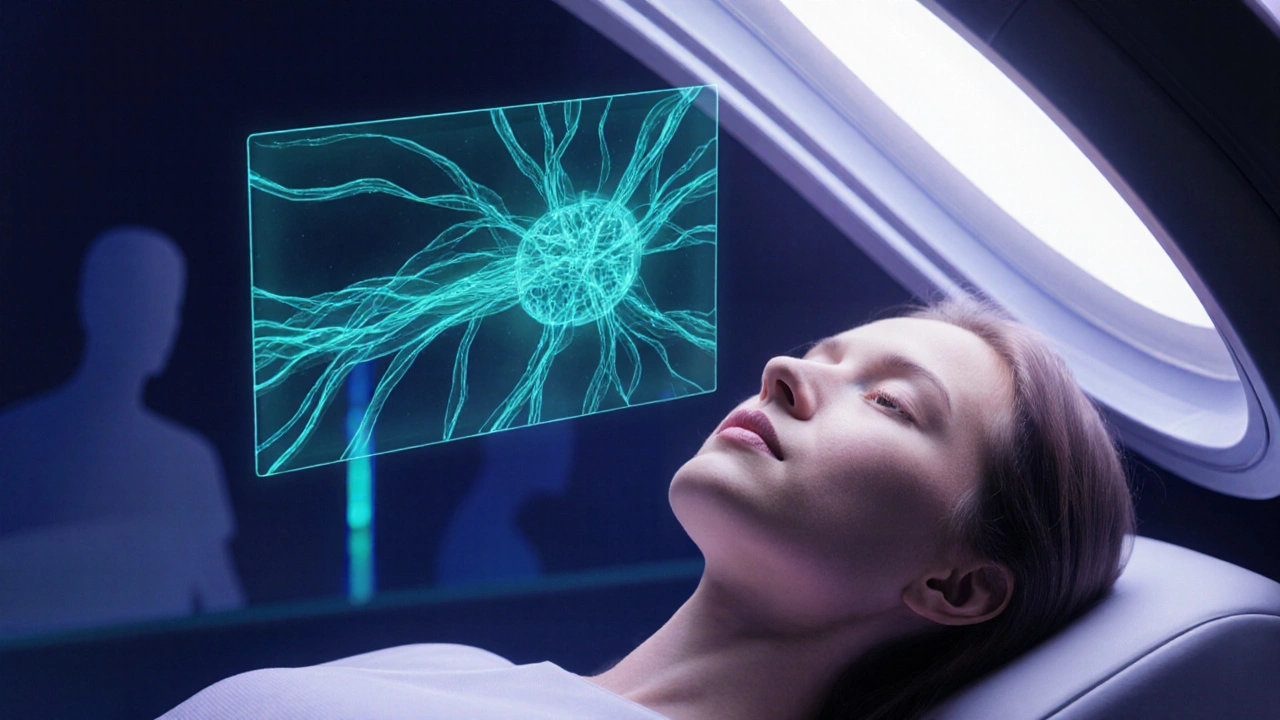
Practical Considerations for Patients
Before opting for stem cell treatment, ask yourself:
- Is the trial phase appropriate for my condition? Early‑phase studies prioritize safety; they may not guarantee pain relief.
- Do I have access to a reputable research center? Look for institutions with an active IND application and published pre‑clinical data.
- What are the costs and insurance coverage? Most trials cover the procedure, but travel and follow‑up visits may be out‑of‑pocket.
- Am I prepared for follow‑up imaging and neurological assessments? Long‑term monitoring is essential to detect rare adverse events.
For patients who cannot enroll in a trial, continued use of proven pharmacologic options and referral to a neurosurgeon for microvascular decompression remain the standard of care.
Future Outlook
By 2030, experts anticipate three breakthroughs that could shift stem cell therapy from experimental to mainstream for TN:
- Standardized GMP‑grade MSC products: Large‑scale bioreactors will lower cost and improve batch consistency.
- Gene‑edited iPSCs: CRISPR modifications can reduce immunogenicity and enhance targeted differentiation into myelinating cells.
- Combination protocols: Pairing stem cells with minimally invasive neuro‑modulation (e.g., focused ultrasound) may amplify remyelination benefits.
Until those milestones are reached, clinicians should stay updated on trial results, maintain a skeptical eye toward “miracle cure” claims, and continue to tailor pain‑management plans to each patient’s tolerance and lifestyle.
Frequently Asked Questions
Can stem cell therapy cure trigeminal neuralgia?
Current evidence suggests stem cells can reduce pain intensity and may promote nerve healing, but they are not yet a definitive cure. Long‑term remission data are still being collected.
What type of stem cell is best for facial nerve repair?
Mesenchymal stem cells have the strongest safety record and have shown the most consistent pain‑relief results in early trials. iPSC‑derived neural progenitors offer higher regenerative potential but carry more regulatory and immunologic hurdles.
Is the procedure painful?
The injection itself is performed under local anesthesia or mild sedation, so patients feel little to no discomfort. Post‑procedure soreness is usually mild and resolves within a few days.
How long does the pain relief last?
In MSC studies, pain scores stayed lowered for an average of 8‑12months. Some patients reported sustained benefit beyond a year, but individual response varies widely.
Are there any FDA‑approved stem cell treatments for TN?
No. All stem cell interventions for trigeminal neuralgia are still investigational and must be conducted within an approved clinical trial or under a hospital‑exemption protocol.

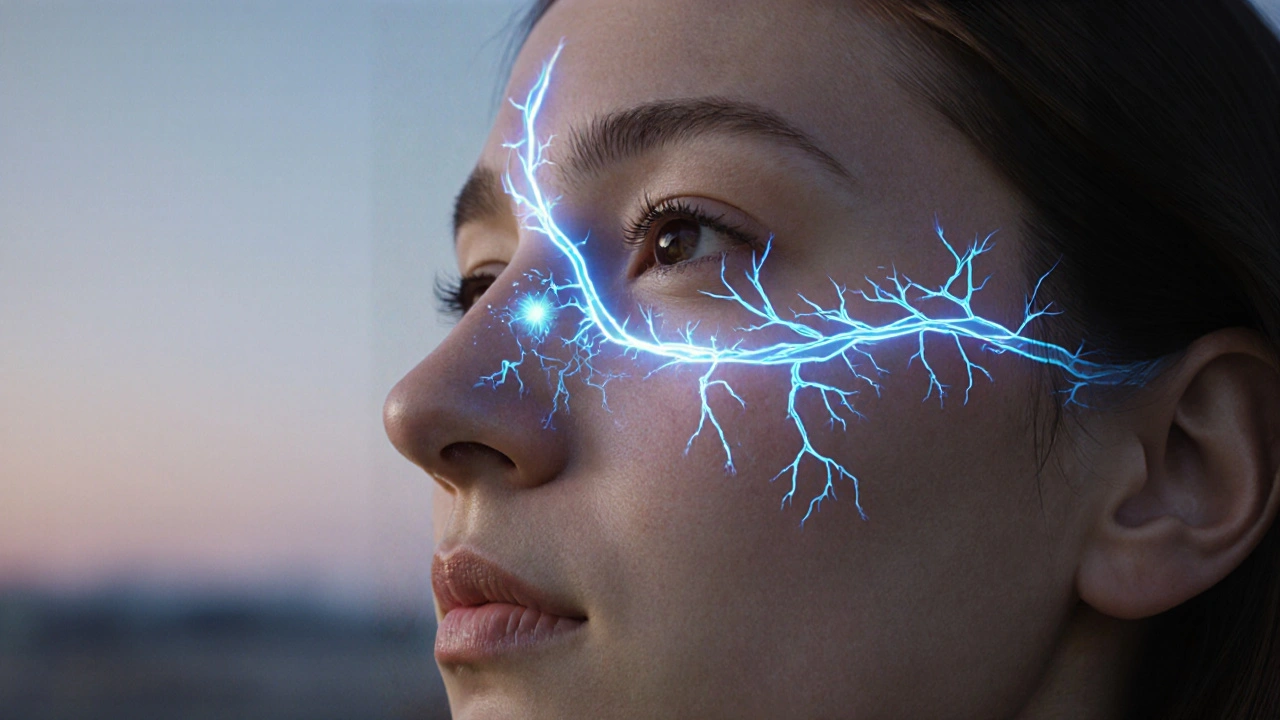
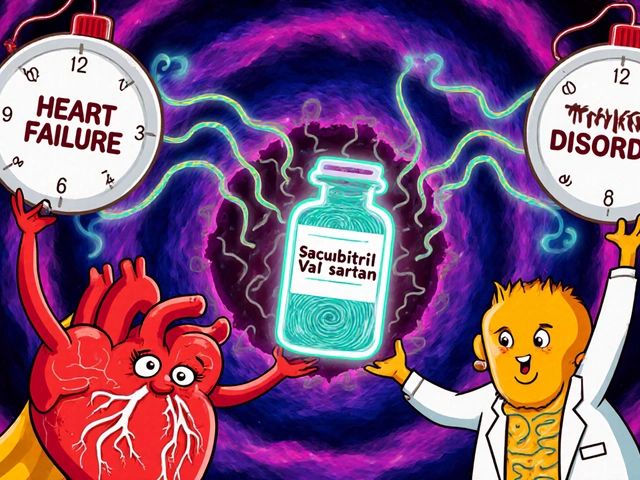

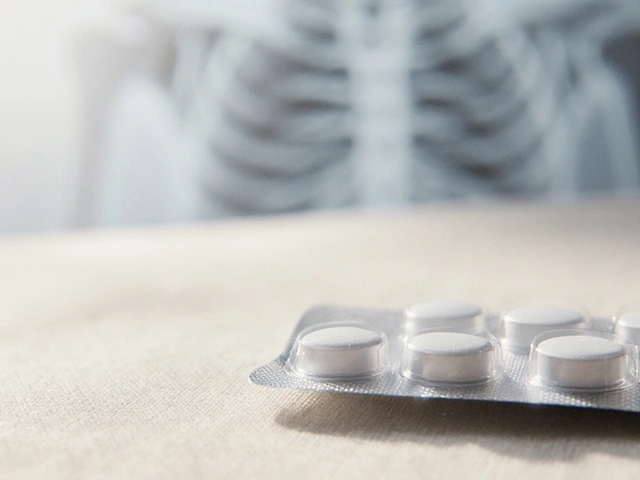
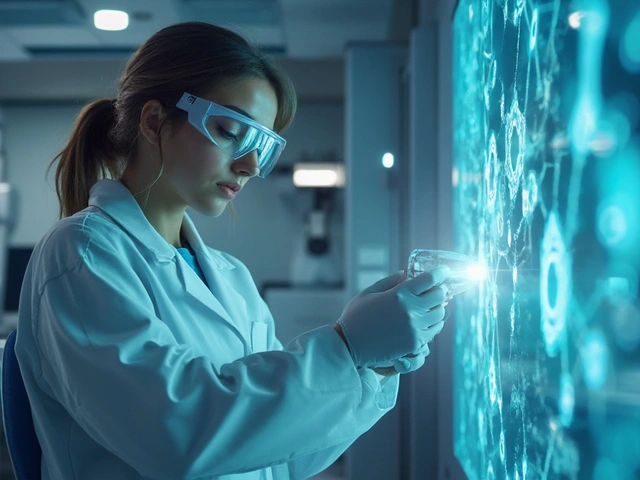
Kimberly Newell
October 14, 2025 AT 18:58Hey folks, just wanted to shout out how definitley useful this deep dive on stem cell therapy is! If you’re just wading in, schedule a chat with a neurologist who follows the newest trial results. Every pain story is different, so don’t feel pressured to match someone else’s timeline. Keep an open mind, stay safe, and lean on your community for support.
Take care!
Drew Burgy
October 18, 2025 AT 06:18Oh great, another \"miracle cure\" that the shadowy biotech giants are pushing while they secretly hoard the real data. Of course they’ll sell you a pricey injection and claim you’re cured, but the fine print says the FDA only \"knows\" about it because they’re in cahoots. It’s almost adorable how they think we’ll swallow the hype without a single independent study.
Andrea Mathias
October 21, 2025 AT 17:38Listen, buddy, your paranoia is as loud as a fireworks show on the Fourth of July-bright, loud, and totally unnecessary. The United States has the best research labs, and we don’t need some overseas cabal to dictate our medical choices. If you’re so scared of \"big pharma,\" maybe try supporting home‑grown startups instead of hiding behind a keyboard. Our troops of scientists are already forging real solutions, no need for your melodramatic conspiracy saga.
TRICIA TUCKER
October 25, 2025 AT 04:58Nice breakdown! Just a quick heads‑up: \"neurologist\" should be \"neurologist,\" and \"definitley\" is \"definitely.\" Other than that, the info is spot‑on and super easy to follow. Keep the friendly vibe coming, it really helps newbies feel welcome.
Dave Tu
October 28, 2025 AT 15:18While the enthusiasm is appreciated, it must be emphasized that the existing data on stem cell interventions for trigeminal neuralgia remain preliminary at best. The reported percentages of pain reduction are derived from small, open‑label cohorts lacking proper control groups. Consequently, any assertion of efficacy must be tempered with a healthy dose of scientific skepticism.
Johnna Sutton
October 31, 2025 AT 12:45With all due respect to the cautious stance presented, it is imperative to acknowledge that the suppression of comprehensive data may be orchestrated by entrenched interests seeking to maintain the status quo. The subtle omission of long‑term safety outcomes is not merely an oversight but could signify a deliberate effort to conceal potential adverse effects. Moreover, the occasional typographical errors such as \"entrenched\" being spelled correctly belie a broader pattern of obfuscation within the field.
Vinay Keragodi
November 3, 2025 AT 10:11Interesting points all around. I’ve been following a couple of the MSC trials from a distance, and the dropout rates seem a bit high, which could skew the results. Also, the injection techniques differ between studies, making direct comparisons tricky. Still, the concept of neuro‑trophic factor release is promising, and I’ll keep an eye on any new peer‑reviewed publications that emerge.
Matt Laferty
November 6, 2025 AT 21:31Let me paint a vivid picture of where we stand in the realm of stem cell therapy for trigeminal neuralgia. First, imagine a patient whose daily life is punctuated by sudden electric shocks, each one a dagger to the face. Traditional pharmacology often feels like throwing a blanket over a raging fire-ineffective and sometimes dangerous. Now enter the stage: mesenchymal stem cells, the unsung heroes harvested from bone marrow or adipose tissue, armed with a cocktail of growth factors. These cells don’t just sit idle; they secrete brain‑derived neurotrophic factor, glial‑derived neurotrophic factor, and a host of anti‑inflammatory cytokines that coax damaged nerves back toward health. In early Phase I/II trials, participants reported an average 45 % reduction in pain scores, and the relief persisted for up to a year in a subset of responders. The mechanism appears twofold: remyelination of the compromised trigeminal root and modulation of the local immune milieu, dampening the chronic inflammation that fuels hyperexcitability. On the other hand, induced pluripotent stem cells, while tantalizing for their pluripotency, bring a Pandora’s box of immunogenicity concerns and regulatory hurdles that have yet to be ironed out. Ethical debates swirl around embryonic stem cells, but they too have shown modest benefits without severe adverse events in limited cohorts. It is crucial to note that most studies are small, open‑label, and lack long‑term safety data, so any enthusiasm must be tempered by scientific rigor. Moreover, the cost of manufacturing GMP‑grade cells remains prohibitive for most patients outside of trial settings. Future breakthroughs may hinge on gene‑editing technologies that render iPSC‑derived neurons less visible to the host immune system. Combination therapies, such as pairing stem cell infusion with focused ultrasound for targeted delivery, hold promise for synergistic effects. Until such advances materialize, clinicians should counsel patients to weigh the experimental nature of these interventions against the solid track record of microvascular decompression surgery. In short, stem cells are a beacon of hope, but the light is still flickering, and we must proceed with cautious optimism.
Genie Herron
November 9, 2025 AT 05:05Wow that was a lot of drama
Lisa Lower
November 12, 2025 AT 16:25Alright team let’s break this down and keep the momentum going we have a real chance to make a difference for people suffering from that relentless facial pain if you’re considering stem cell options remember three core pillars: safety efficacy and accessibility first make sure the clinic follows strict GMP protocols no shortcuts no shady labs second stay on top of the latest peer‑reviewed data don’t rely on hype from marketing materials third build a solid support network with your neurologist pain specialist and possibly a mental health professional because coping with chronic pain is as much mental as it is physical keep pushing forward and stay informed you’ve got this
Dana Sellers
November 15, 2025 AT 13:51Look, I get the hype but we can’t just jump on every new thing. If it’s not proven, people could waste money and hope. Stick to what works and be careful.
Damon Farnham
November 19, 2025 AT 01:11Indeed, the discourse surrounding regenerative interventions necessitates a meticulous appraisal; one must not conflate anecdotal optimism with empirical validation. The lexicon of \"miracle cure\" betrays a lamentable proclivity toward hyperbole, which, in turn, undermines the gravitas of genuine scientific endeavor.
Justin Park
November 22, 2025 AT 12:31From a philosophical standpoint, the quest for relief touches on the age‑old tension between body and mind 🌌. If we consider pain as an emergent property of neural mis‑communication, then targeting the underlying circuitry with stem cells could be seen as a form of existential recalibration. Yet, the uncertainty inherent in early‑stage trials reminds us that knowledge is provisional, and humility remains a vital companion on this journey. 🤔
nathaniel stewart
November 25, 2025 AT 09:58While the enthusiasm surrounding stem cell ventures is commendable, it is essential to address the methodological limitations inherent in the current literature. Many studies suffer from small sample sizes, lack of blinding, and short follow‑up periods, which collectively diminish the robustness of the conclusions drawn. Consequently, any assertion of definitive efficacy must be tempered with appropriate scientific caution.
Pathan Jahidkhan
November 28, 2025 AT 21:18Ah, the lofty musings of philosophers again, drifting on clouds of metaphor while the patients endure real agony. One could argue that such poetic reflections, however well‑intentioned, distract from the gritty reality of needing hard data and tangible outcomes. Still, the drama of hope cannot be dismissed outright, even if it flirts with the absurd.
Dustin Hardage
December 2, 2025 AT 08:38To summarize the current evidence: mesenchymal stem cells have demonstrated the most favorable safety profile, with average pain reduction around 45 % sustained for several months. Induced pluripotent stem cell approaches show potential for greater regeneration but are limited by immunogenicity and regulatory concerns. Embryonic stem cell trials remain few and are clouded by ethical debates. Clinicians should therefore prioritize MSC protocols within controlled trial settings while monitoring patients closely for adverse events.
Manish Singh
December 5, 2025 AT 19:58Thank you all for sharing these perspectives. It can be overwhelming to navigate such complex information, but remember you’re not alone on this path. Reach out to supportive communities, keep asking questions, and stay hopeful that ongoing research will bring better options for everyone.